Sea Monsters on Renaissance Maps
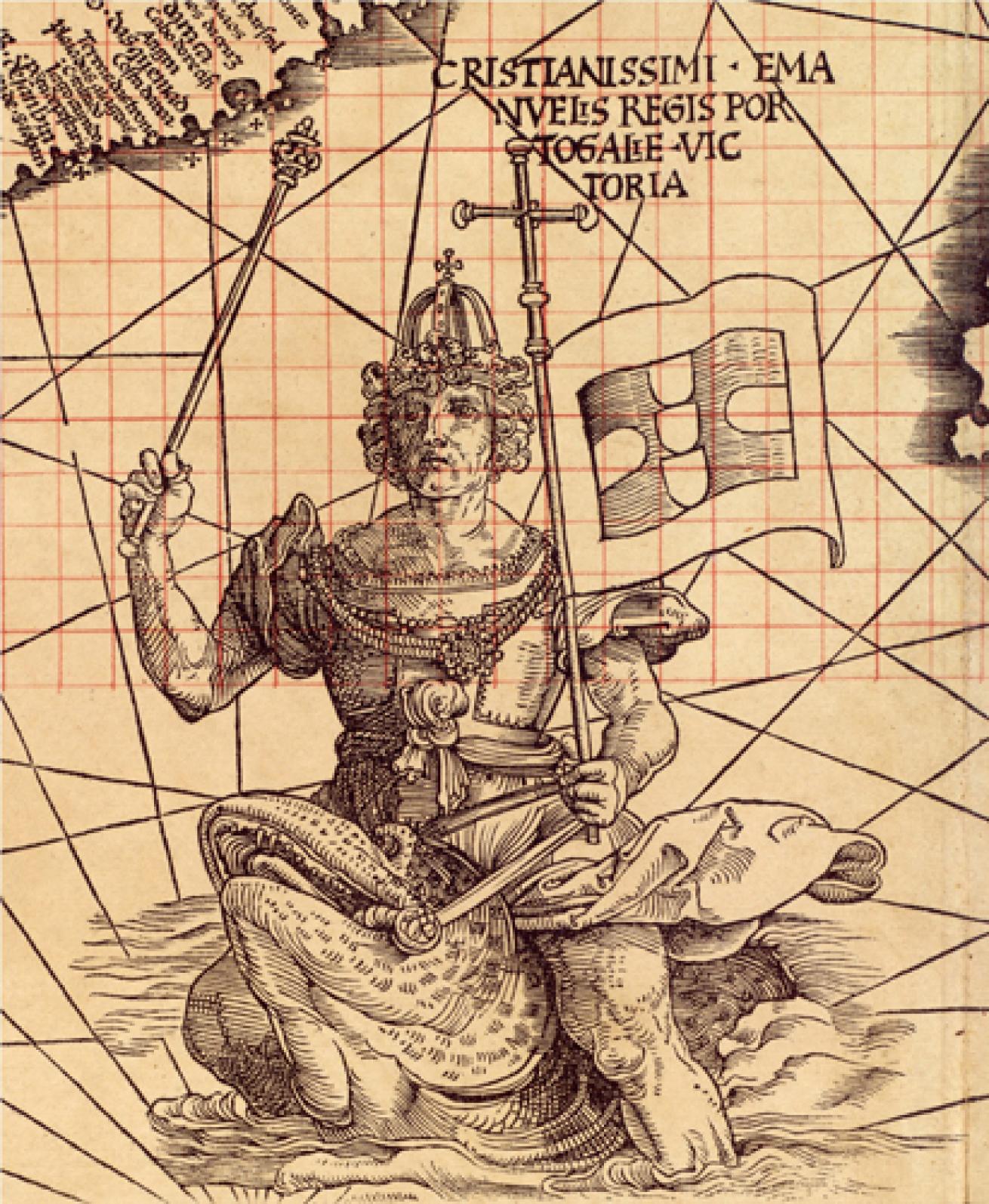
library of congressKing Manuel of Portugal riding a sea monster off the southern tip of Africa, symbolizing Portugal’s control of the seas, on Martin Waldseemüller’s Carta marina of 1516.
For thousands of years sea monsters have appeared on maps as both warnings to travelers and as decorations. Chet Van Duzer explores these monsters in his new book Sea Monsters on Medieval and Renaissance Maps and gives readers a better understanding of their place and purpose in history.
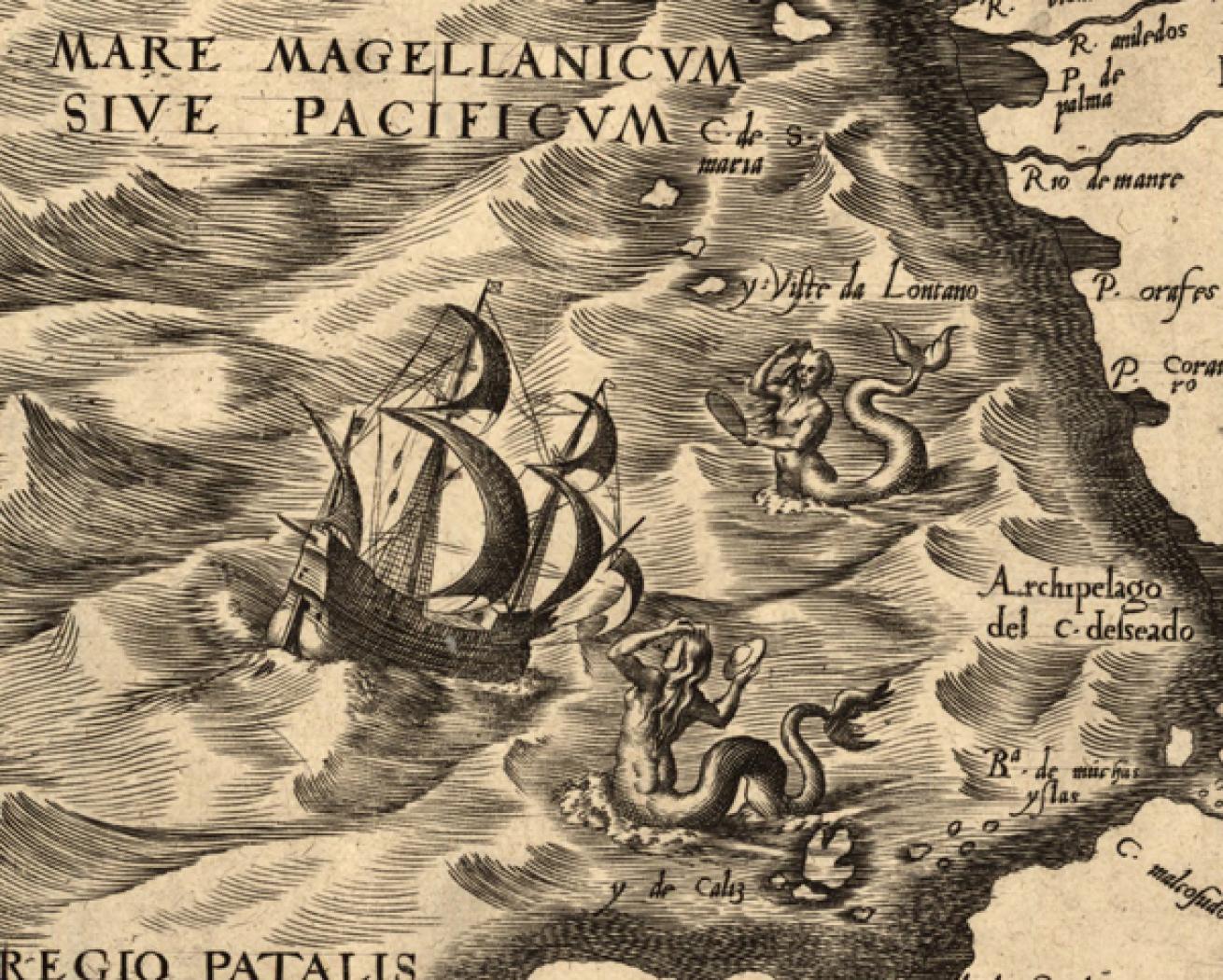
library of congressTwo sirens, holding mirrors to symbolize their vanity, approach a ship to sing to its sailors and bewitch them, on Diego Gutiérrez’s map of 1562.
Scuba Diving: What sparked your interest in sea monsters on maps?
Chet Van Duzer: The ocean has had a spell on me since I was a child, and I have been studying old maps for the last fifteen years. So in 2009 when I was in the National Library in Madrid, and I consulted a 15th century manuscript of Ptolemy’s Geography and saw that its maps had sea monsters everywhere, I was immediately interested. I started investigating the sea monsters on other medieval and Renaissance maps, and found them to be absolutely fascinating, both for their beauty and their whimsy, and for what they can tell us about the sources the cartographer was using. I also found that there was no good book about sea monsters on old maps, so I set about writing one.
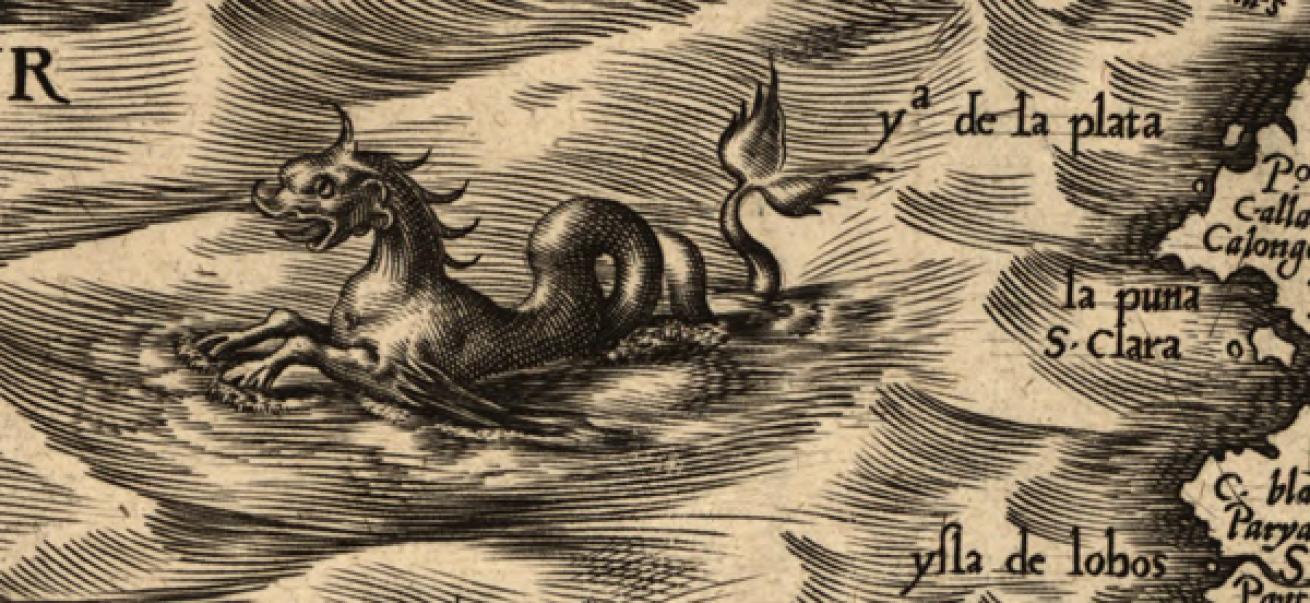
library of congressA fanciful sea dragon on Diego Gutiérrez’s map of 1562
SD: You studied maps from as far back as the 10th century for your book, what kind of challenges did you face in working with material of that age?
CVD: The first challenge was determining which old maps have important, distinctive, or interesting sea monsters, so I spent a lot of time examining reproductions of maps in books to find the ones that were important for my study. Obtaining access to the libraries or archives is largely a matter of preparation: getting the details about the map, including its shelfmark or other identifying number; getting letters of recommendation to secure access to the library; and writing to the curators in advance to make sure that the manuscript is not on exhibition or in the conservation laboratory. One can’t travel to every library, and in some cases the most practical solution is to order high-resolution images of the map, and study the monsters that way. But it is a thrill to consult the original documents, and to be eye-to-eye with a monster painted or printed 500 years ago.
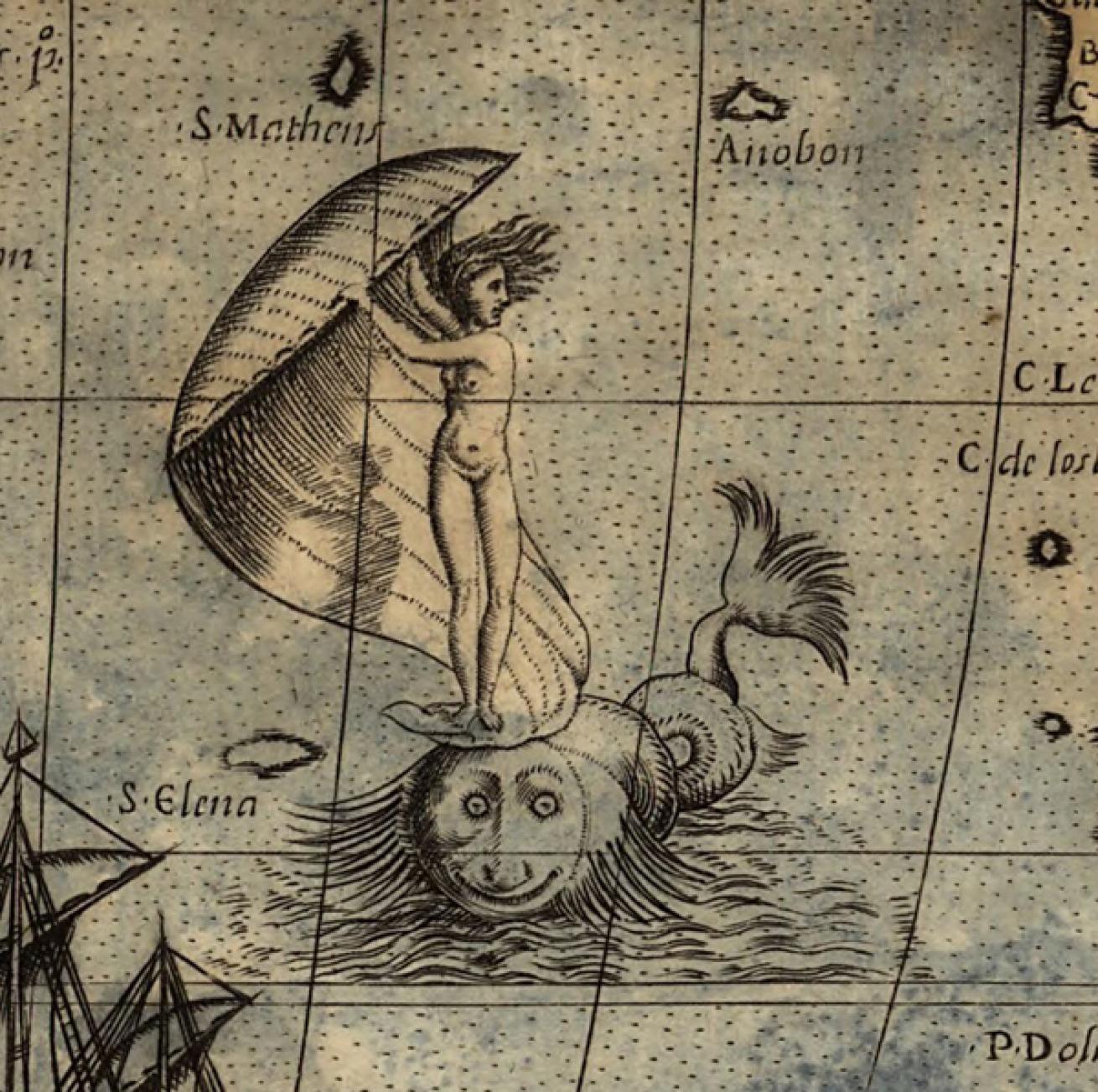
library of congressA sea monster involved in an early version of wind-surfing: the woman is a personification of “Fortuna Audax” or Bold Fortune. From Paolo Forlani’s Vniversale descrittione di tvtta la terra conoscivta fin qvi (Venice, 1565)
SD: Why do you think sea monsters were included in maps during the medieval and renaissance times? Did they have any special meaning or was it purely decoration?
CVD: Although the sea monsters on many medieval maps seem imaginative and fantastic to our eyes, in most cases they were the artists’ best efforts to represent an animal that contemporary scientific texts such as encyclopedias or bestiaries (medieval books of animals) said existed. We have to bear in mind that in the vast majority of cases, the cartographer was drawing or painting a creature he had never seen, copying the image from a book whose artist had never seen the creature either. There is a decorative aspect to all sea monsters, but particularly on medieval maps, the principal intention was to create a more complete image of the world by including some of its aquatic life — and also to indicate the dangers that the sea might present to sailors. On later maps, beginning around the middle of the sixteenth century, we see more fantastic sea monsters, monsters apparently created in the cartographer’s imagination, rather than copied from scientific books. So from this point on, there was more emphasis on sea monsters as cartographic decorations.
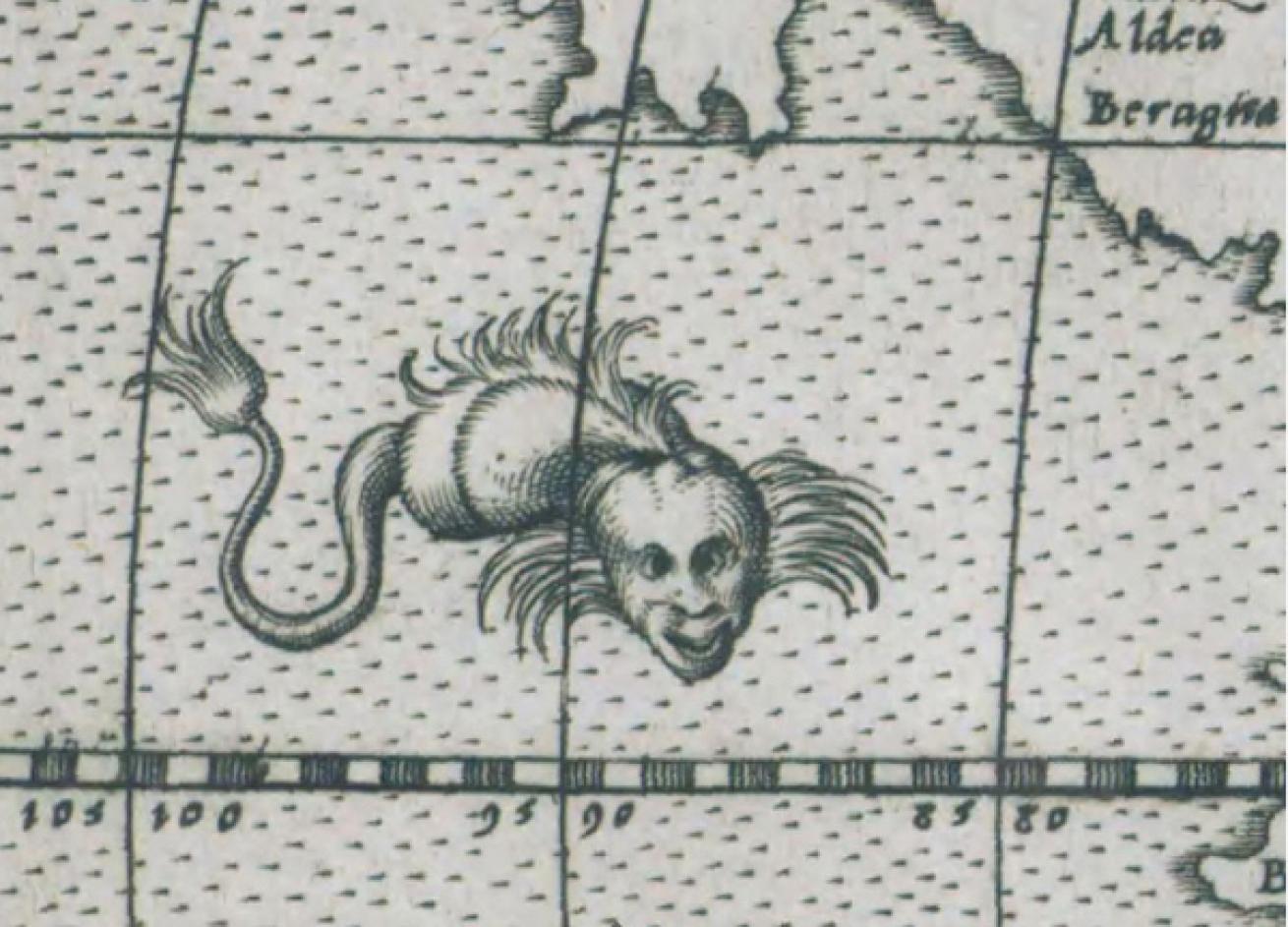
YaleA human-headed sea monster of pure whimsy on Donato Bertelli’s world map of 1568
SD: What is something you were surprised to learn while writing this book?
CVD: I was certainly surprised by how few of the sea monsters on old maps were inspired by sharks. Today we think of sharks as one of the most dangerous creatures in the sea, but that must be because we spend more time in the water, for sharks barely register on medieval and Renaissance maps. There are also some cases that demonstrate with surprising clarity how people’s ideas about what is a monster change over time. There is a map from 1595 on which a walrus is explicitly labeled a monster — something that seems strange to us, I think.
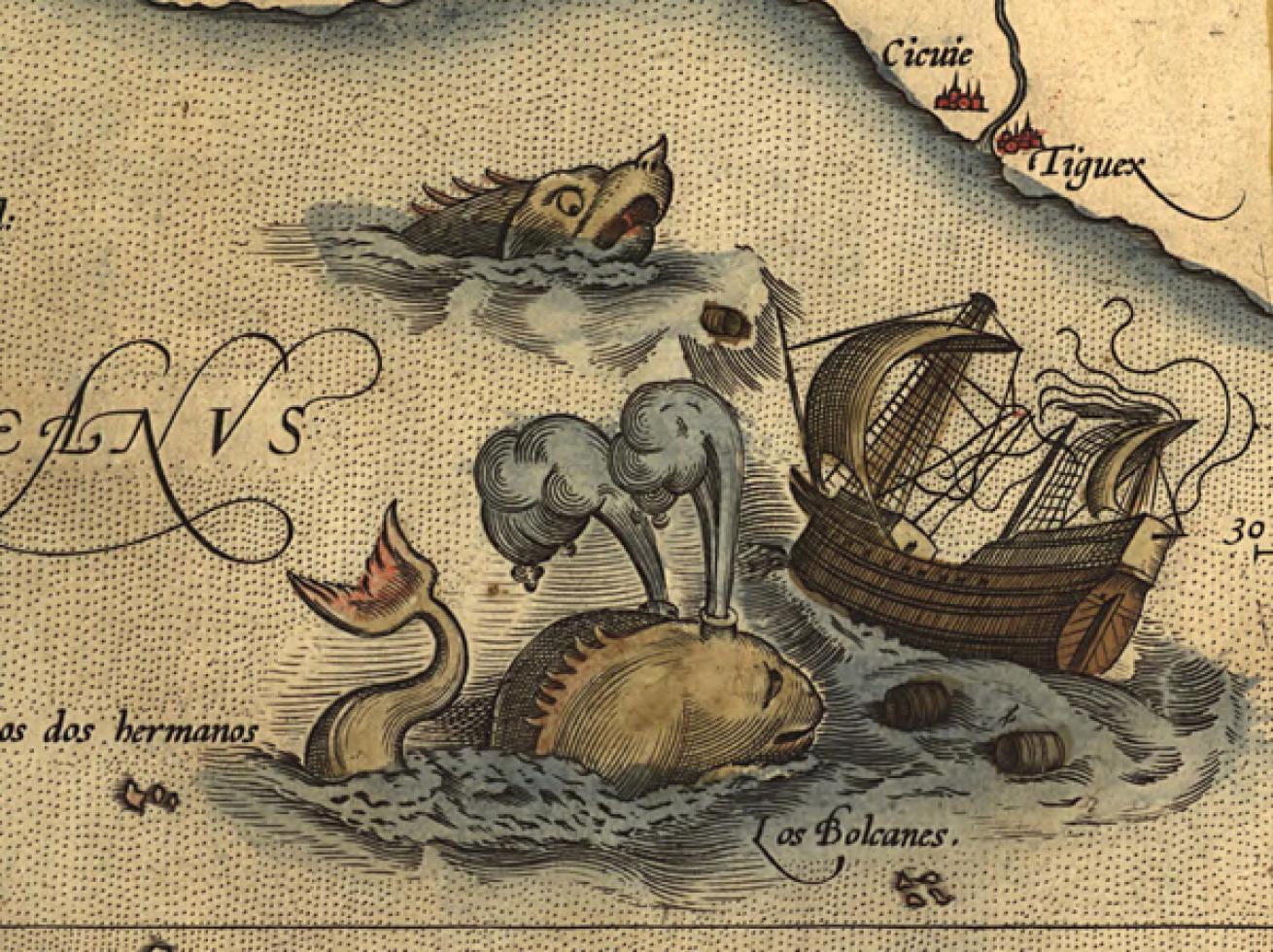
library of congressTwo whale-like sea monsters attack a ship on the map of India in Abraham Ortelius’s Theatrum orbis terrarum of 1570
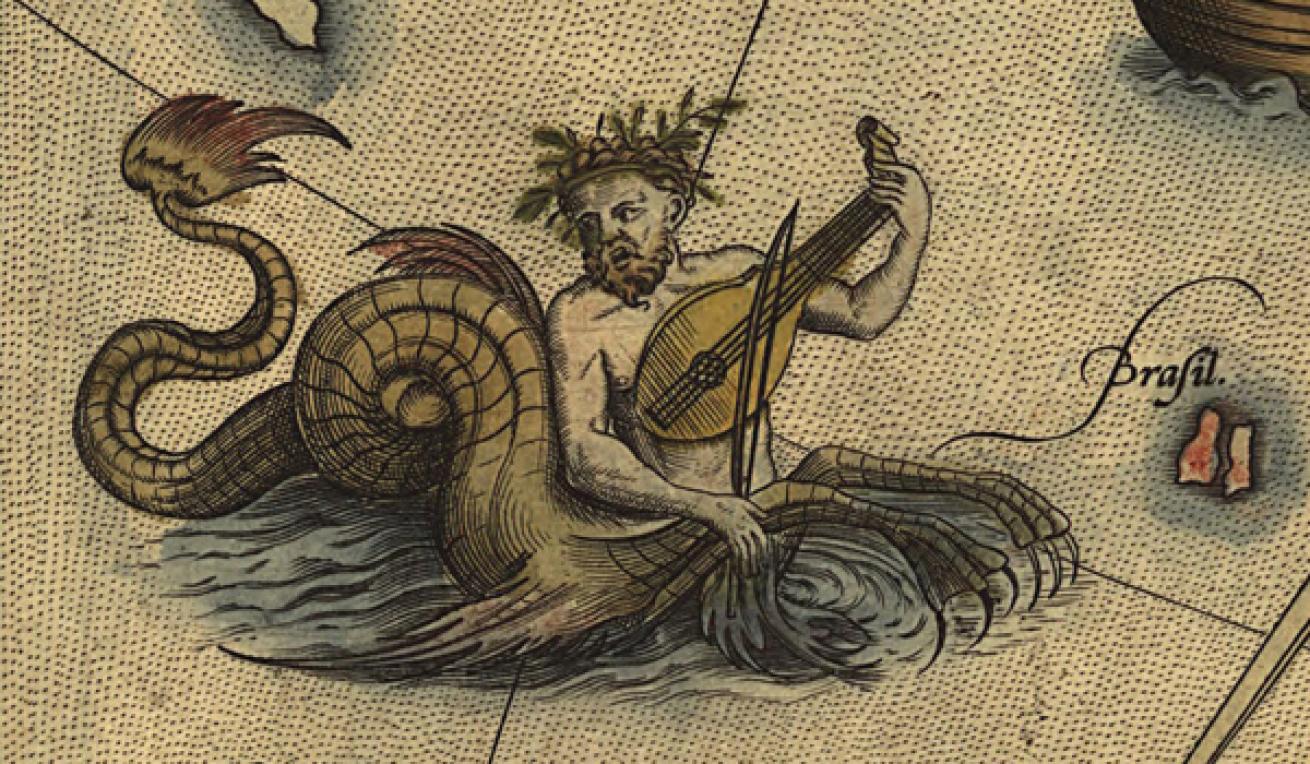
library of congressAn aquatic centaur playing a viol on the map of Scandinavia in Ortelius’s Theatrum orbis terrarum of 1570 (Library of Congress).
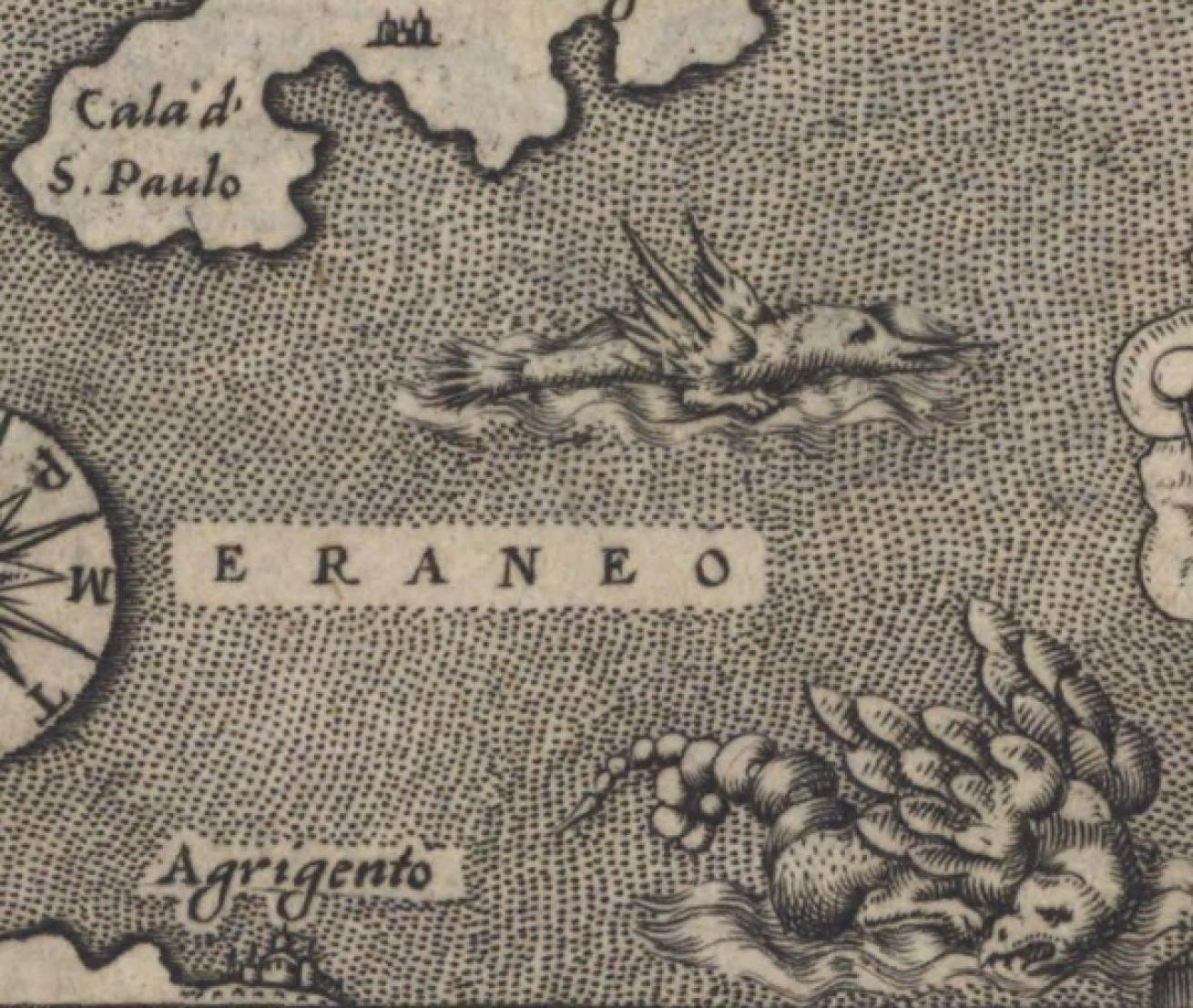
YaleA remarkable and fanciful bird-like sea dragon with very heavy wings and a segmented tail on the map of Malta in Tommaso Porcacchi’s island book titled L’Isole piu famose del mondo (1572)
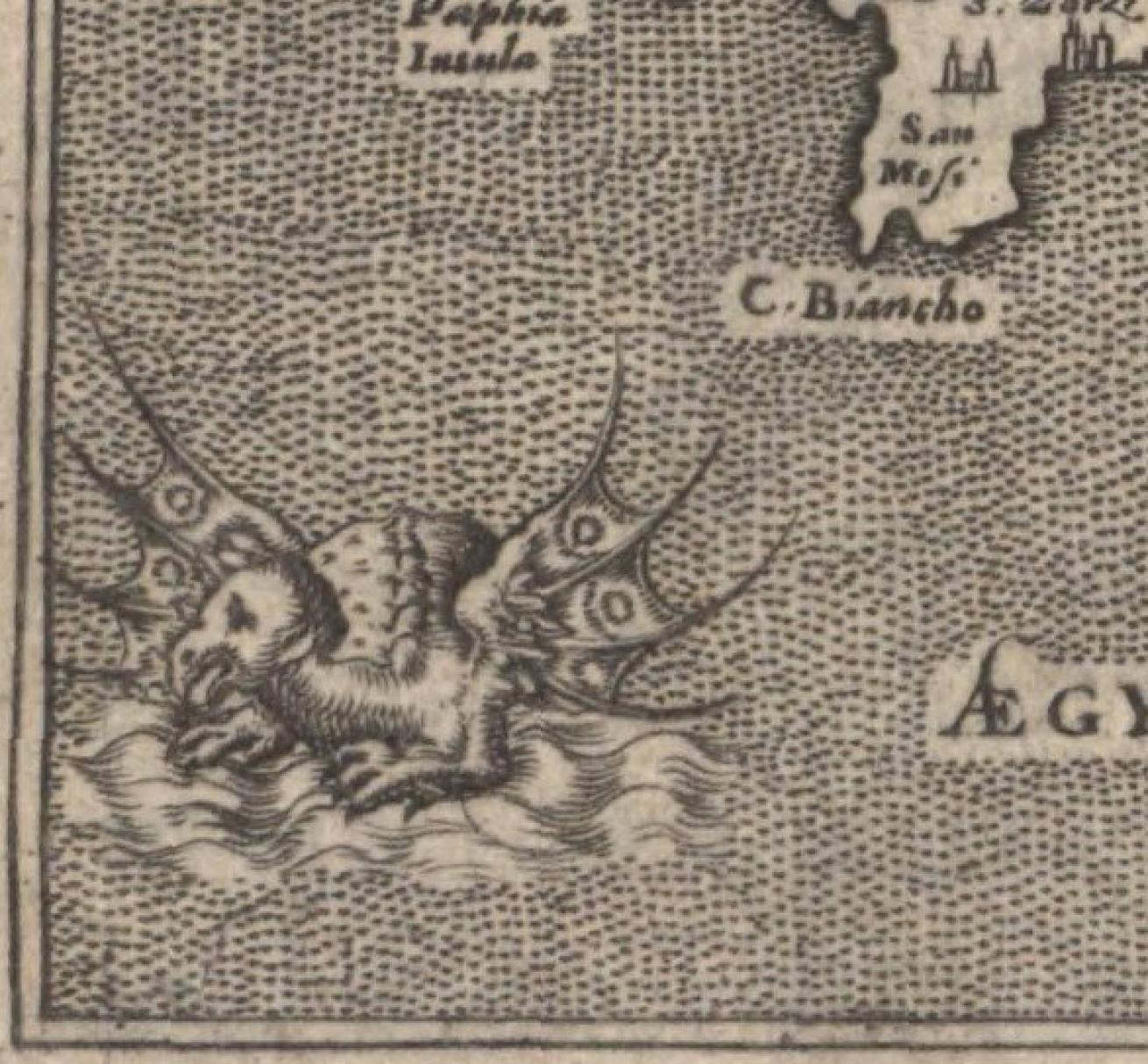
YaleA spectacular winged sea dragon on the map of Cyprus in Tommaso Porcacchi, L’Isole piu famose del mondo (1572)
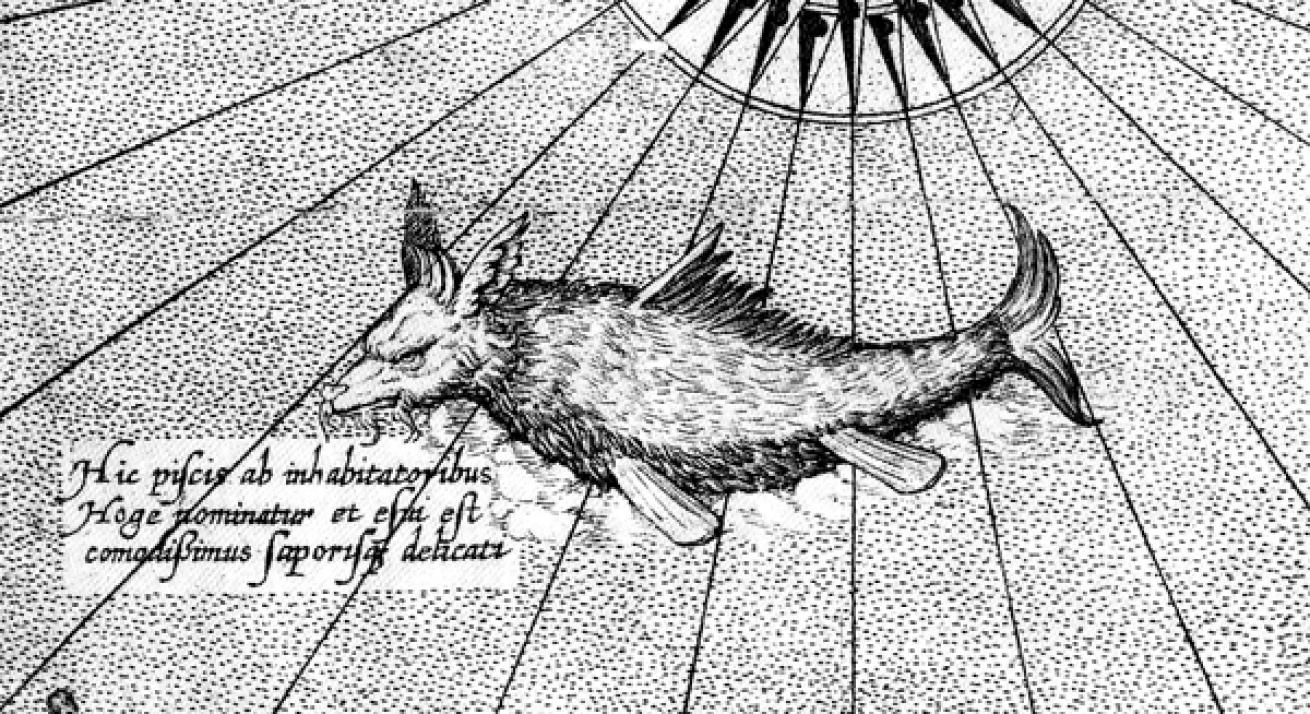
library of congressA sea monster called the “hoge” on de Jode’s wall map of America (1595-96); despite the creature’s menacing aspect, the text beside it assures us that it is good to eat and has a delicate flavor.
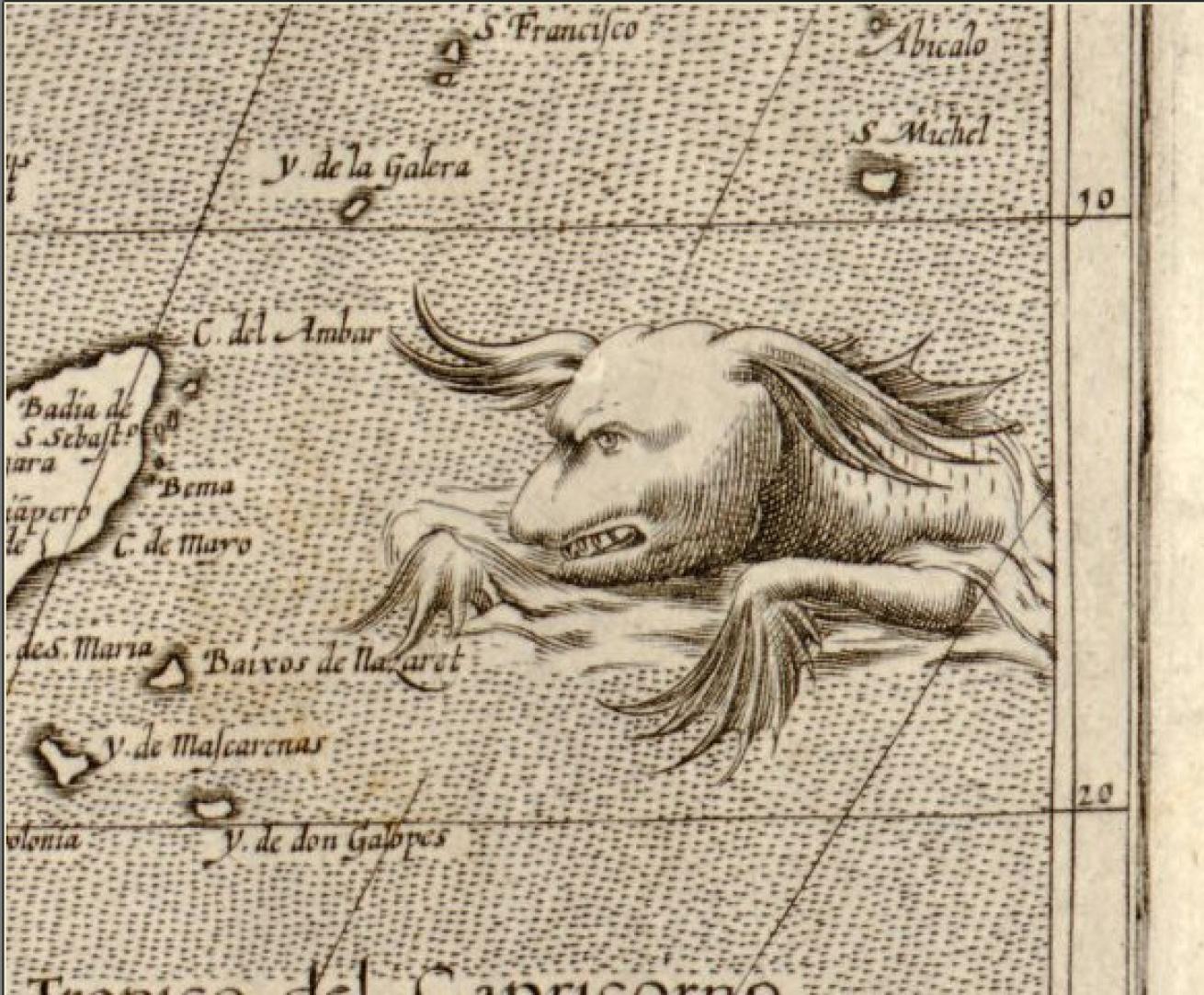
library of congressAn ominous reptilian sea monster on Arnoldo di Arnoldi’s map of Africa of 1600
SD: What do you hope your readers take away from this book?
CVD: I hope the book conveys an appreciation for the artistic richness of old maps, and will draw some readers to explore what else can be learned from these wonderful documents. Naturally I hope that readers learn something about how our ideas about the inhabitants of our oceans have evolved over the centuries. And finally, I hope that readers come away from the book with a smile inspired by images of some of the more whimsical sea monsters.










